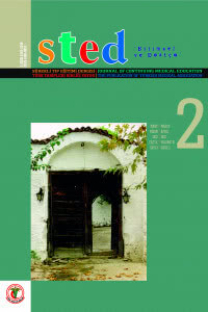Afrika'da bir mülteci kampındaki sağlık hizmetlerine halk sağlığı yaklaşımı
Bu rapor, Kenya Dadaab Mülteci Kampları'ndaki mültecilerin yaşam koşullarını, karşılaştıkları sağlık sorunlarını halk sağlığı yaklaşımı ile belirleyerek çözüm önerileri sunmak amacıyla hazırlanmıştır. Dadaab Mülteci Kampları, kuruluşunda planlanan sayının dört - beş katı mülteciyi ağırlamaya çalışmaktadır. Bu nedenle mültecilerin yeterli gıda, sağlık ve sosyal yardım olanaklarından mahrum kalması halk sağlığı açısından risk oluşturmaktadır. Anne ve bebek tespit ve izlemlerinin yetersiz olduğu görülmüştür. Aile planlaması ve danışmanlık hizmetleri ise çok yetersizdir. Mülteciler, etkin bağışıklama ile önlenebilecek hastalıklara karşı risk altındadırlar. Kamplarda içme ve kullanma suyu için şebeke sistemi ve sıvı atıklar için kanalizasyon sistemi bulunmamaktadır. Katı atıklar ise toplanmamakta, mülteciler kendi olanakları ile atıkları biriktirip yakmaktadırlar. Mülteciler yeterli beslenmelerine karşın, dengeli beslenememektedir, beslenmeleri tek yönlü ve daha çok kuru gıda ağırlıklıdır. AID Kliniğinde değerlendirilen dönemde başvuran hastalara en sık konulan tanılar; alt solunum yolu enfeksiyonu (%23.6), idrar yolu enfeksiyonu (%22.3), üst solunum yolu enfeksiyonu (%16.3), sıtma (%9.5), gastroenterit (%8.4) ve diğer (miyalji, peptik ülser, anemi, cilt enfeksiyonu
) (%19.9) olmuştur. Sonuç olarak; yeni kurulan kamplara acilen büyük tanı ve tedavi merkezleri kurulmalı, bu kamplardaki klinikler daha fazla sağlık çalışanı ve tıbbi malzeme ile desteklenmelidir. Somalide göçe neden olan faktörleri ortadan kaldırmak için girişimlerde bulunulmalı, mülteciler en kısa zamanda kendi ülkelerine geri gönderilmelidir.
Public health approach to health care services in a refugee camp in Africa
This report has been produced to determine the living conditions and the health problems facing refugees in refugee camps of Dadaab, Kenya and to present suggestions by the public health approach. The Dadaab Camps are endeavouring to host four five times the number of refugees planned when they had been established. For this reason, refugees deprived of adequate food, health and social welfare facilities are carrying serious risks for public health. Detection and follow-up of infants and their mothers was poor for both the mother and the baby. Family planning and counseling services was very poor. Refugees are at risk of preventable diseases through active immunization. There is no drinking water supply system, nor sewage system for liquid wastes in the camps. On the other hand, solid waste is not collected. Hence, refugees accumulate and burn them on their own. Although the refugees are provided adequate food, they do not have balanced nutrition. The foods provided are mainly one-sided and majorly dried food. The most common diagnoses in patients admitted to AID Clinic and evaluated in that period were; lower respiratory tract infection (23,6%), urinary tract infection (22,3%), upper respiratory tract infection (16,3%), malaria (9,5%), gastroenteritis (8,4%) and other (myalgia, peptic ulcer, anemia, skin infections ...) (19,9%). Consequently; large diagnostic and treatment centers should be established urgently in the newly established camps. Present clinics should be supported by more medical supplies and health workers. Politicians should attempt to eliminate the causes of migration in Somalia and refugees should be returned to their own countries as soon as possible.
___
- 1- Convention and Protocol Relating to the Status of Refugees, Geneva: UNHCR Communications and Public Information Service 2010. s. 3
- 2- UNHCR Statistical Yearbook 2010. 10th edition 2010. s. 6-9.
- 3- UNHCR Global Trends 2010. 2010. s. 41.
- 4- Osman D, Khan M, The Dadaab Camps Mitigating the effects of drought in the Horn (perspective), PLoS Curr. 2011 December 15 ; 3 : RRN1289.
- 5- Spiegel PB, Burton A, Tepo A et al. Mortality among refugees fleeing Somalia Dadaab Refugee Camps, Kenya July August 2011, Morbidity and Mortality Weekly Report August 26, 2011: 60 (33).
- 6- Camp Population Statistics by Country of Origin, Sex and Age Group, 19.02.2012, http://data.unhcr.org/horn-of-africa
- 7- Brifing Note On The Health Sector Dadaab Refugee Camps, October 2011. s. 2-4.
- 8- Fuller J, Ballantyne A. Immigrants and equitable health-care delivery in rural areas: Australian Journal of Rural Health 2000; 8: 189-193
- 9- Topçu S, Beşer A. Göç ve Sağlık. C.Ü. Hemşirelik Yüksekokulu Dergisi 2006; 10(3): 37-42.
- 10-World Health Statistics 2012. World Health Organisation 2012
- 11-World Health Organisation, Global Health Observatory Data Repository. http://apps.who.int/ghodata/?vid=2469 , Erişim: 30.07.2012
